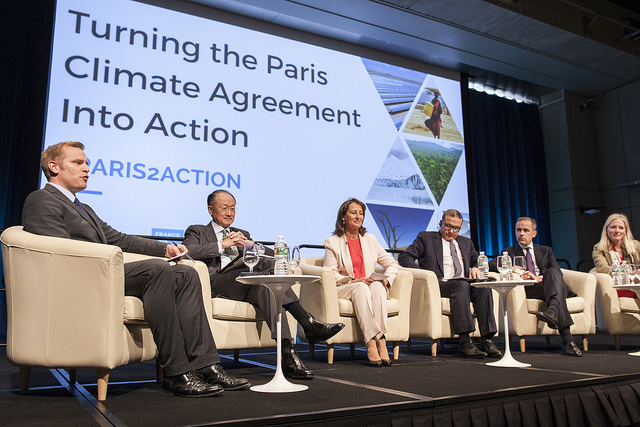The Paris Agreement on Climate Change has been met with much acclaim. One of its claimed strong points is that it is much more universal than earlier climate change agreements. In earlier climate agreements, it made a big difference whether or not you were a developed country, in fact whether you were a developed country or not in 1992. Annex I to the 1992 UN Framework Convention on Climate Change is a list of countries in the OECD (the developed-country club) back in 1992, and it mattered a lot whether you were in that list or not. For example, under the 1997 Kyoto Protocol, only countries in Annex I had a commitment to reduce their emissions.
The Paris Agreement is meant to be different. Leading climate change legal expert Dan Bodansky writes that “Most of the commitments in the Paris Agreement apply to all parties” and that Paris “completely abandons the Annex I/non-Annex I bifurcation.”
So how undifferentiated is the Paris Agreement?
It’s certainly true that the Paris Agreement doesn’t reference the Annex I/non-Annex I distinction, but how significant is that change? Paris makes 15 references to developed countries, and 56 to developing countries. That’s up from the 39 references to developing countries or non-Annex-I countries in the 2009 Copenhagen Agreement. Prima facie, differentiation doesn’t seem to have disappeared, even if the terminology has changed.
And there is differentiation in some very important areas, not only in financing – where it is desirable – but in the type of pledges required of different countries, of which more later. Take for example, the key issue of reporting and verification. On the one hand, Article 4.13 simply says that “Parties shall account for their nationally determined contributions.” No differentiation there. On the other hand, it is Article 13 that has all the detail on reporting. It provides “flexibility” to developing countries that need it (Article 13.1). And an accompanying decision to the main Paris Agreement specifically says that for developing countries “the scope of review could provide for in-country reviews to be optional.” (Para. 90). In other words, developing countries probably won’t be subject to the same scrutiny of their emissions reporting as developed countries, where in-country reviews are very much part of the standard international scrutiny arrangements.
The final emissions reporting and verification rules are still to be determined, but there is plenty in the Paris Agreement and the accompanying decisions to give developing countries ammunition to argue for a very differentiated approach, with one set of rules for developed countries, and one for developing.
One of the curious features of the Paris Agreement, and characteristic of its minimalist approach, is that there is no explicit definition of developed or developing countries. However, there is a test we can use. Article 4.4 says that developed countries have to put forward “economy-wide absolute emission reduction targets”, that is, targets of the form that emissions are to be reduced by x% in y year compared to z base year. Let’s call these ‘absolute targets’ for short. Developing countries aren’t prohibited from putting forward absolute targets – to the contrary, they are encouraged to over time – but they are not required to. Therefore, if a country doesn’t put forward such a target, it is clearly not considered to be a developed country under the Paris Agreement. We are interested in countries that are developed countries today but that weren’t in 1992. Neither Korea nor Mexico put forward an absolute target, even though they are both now OECD members. Nor did Singapore, which is not an OECD member, but has the per capita income of a developed country. The implication is that all three countries are accepted in the international climate change regime as developing countries.
One might still argue that Paris represents potential progress on the differentiation front. The developed/developing categorization may be more flexible than the Annex I/non-Annex I dichotomy. Perhaps next time (in 2025 or 2030), Korea, Singapore and Mexico will finally admit they are developed countries. By the same token, however, I cannot see the basis for leading climate change economist Robert Stavins’ claim that “All countries must eventually face the same monitoring and reporting requirements.” Rather, there seems to be nothing to prevent countries from indefinitely presenting themselves as developing, and therefore being subject to different reporting rules.
Both Dan Bodansky and Robert Stavins underestimate the extent of differentiation embodied in Paris. It still matters a lot whether you are a developed or developing country. There is nothing wrong with that in itself. Developed countries should do more. But – unfortunately, even if inevitably – the Paris Agreement continues the tradition of allowing this distinction to matter in ways that shouldn’t matter, such as how your emission reports are verified. Even more unfortunately, the differentiation continues to be based on your income level, not today, but some 20 years earlier.
Stephen Howes is the Director of the Development Policy Centre. This post is based on his comments at a panel on the Paris Agreement at the 2016 Australasian Aid Conference.



Leave a Comment